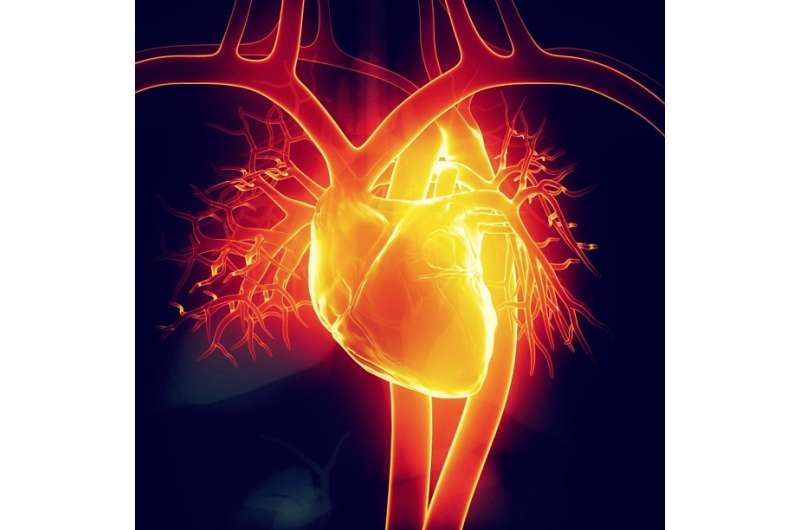Sub-set of stem cells found to minimize risks when used to treat damaged hearts

Scientists use mathematical modeling to simulate human mesenchymal stem cell delivery to a damaged heart and found that using one sub-set of these stem cells minimises the risks associated with this therapy. The study, published in PLOS Computational Biology, represents a development in novel strategies to repair and regenerate heart muscle and could improve stem cell treatments for heart attack patients.
Myocardial infarction—better known as a heart attack—strikes on average every 43 seconds in America. This has motivated novel cardiotherapeutic strategies to repair and regenerate heart muscle, including human mesenchymal stem cell (hMSC) therapy. However, in clinical trials the benefits have often been modest and transient, which reflects our limited mechanistic knowledge of how hMSCs impact cardiac function.
Researchers, led by Joshua Mayourian at the Icahn School of Medicine at Mount Sinai, used mathematical modeling to simulate electrical interactions between these stem cells and heart cells to develop insight into possible adverse effects, as well as to hypothesize new methods for reducing some potential risks of this therapy.
Their computer simulations demonstrate that one family of human mesenchymal stem cells minimizes disturbances in cardiac single-cell and tissue level electrical activity. By identifying the benefits of using this specific sub-set of human mesenchymal stem cells this research may enhance safety for heart attack patients receiving stem cell therapy. This advance could therefore lead to new clinical trials and future improvements in treatment of patients with heart failure.
This study provides a new mathematical model that could be incorporated into future computational studies on mesenchymal stem cells. It also provides novel insight into human mesenchymal stem cell-heart cell interactions that can guide future experimental studies to understand the mechanisms underlying mesenchymal stem cell therapy for the heart.
More information: Mayourian J, Savizky RM, Sobie EA, Costa KD (2016) Modeling Electrophysiological Coupling and Fusion between Human Mesenchymal Stem Cells and Cardiomyocytes. PLoS Comput Biol 12(7): e1005014. DOI: 10.1371/journal.pcbi.1005014


















